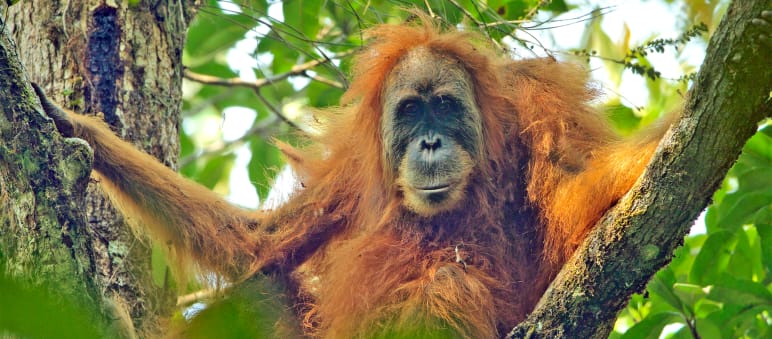
Chinese hydropower: extinction for the Tapanuli orangutan?
Indonesia: Indonesia’s Tapanuli orangutan, which was only identified as a distinct species two years ago, is now on the list of the 25 most endangered primates: a Chinese hydroelectric dam project on Sumatra could destroy the tiny habitat of the remaining 800 apes.
China’s state-owned Sinohydro Group plans to build a 510 MW hydroelectric dam in Batang Toru forest on the Indonesian island of Sumatra. The dam’s reservoir would flood the heart of the orangutans’ tiny habitat. Power lines and access roads – and the loggers and settlers that roads inevitably attract – would fragment the surrounding area, cutting individual populations of the reclusive apes off from one another. Environmental activists are working to stop the project, but protests, petitions and lawsuits have so far failed to change the Indonesian government’s determination to push through numerous hydroelectric power plants as sources of renewable energy.
Further threats to the survival of the Tapanuli orangutan include gold mining and illegal plantations. Time and again, the apes have been injured or killed in human-wildlife conflicts. Urgent protective measures will be needed to save the species from extinction.
Until 2017, scientists considered the Tapanuli orangutan to be a subspecies, but analyses of their genome, body structure and behavior made it clear that they are a species in their own right.
Primates in Peril: The World’s 25 Most Endangered Primates, 2018-2020 is a list compiled every two years by the International Union for Conservation of Nature (IUCN), the organization that also maintains the Red List of Endangered Species.
“Primates in Peril” is intended as a concrete call to action. Worldwide, 43 percent of all (non-human) primates are classified as “endangered” or “critically endangered”. 12 of the 25 most endangered species were not on the previous edition of the list.

Stop bulldozing the Tapanuli orangutan!
A dam for a 510 MW hydropower plant in Batang Toru forest on Sumatra could spell oblivion for the recently discovered Tapanuli orangutan.

Biodiversity
Life on Earth originated around 4 billion years ago. Since then, an unfathomable number of species have evolved, around half of which are insects. Numerous plant and animal species have yet to be documented, and many new ones are being discovered every day.